Rikugien, a Tokyo Stroll Garden
Rikugien was completed around 1700, commissioned by the son of a high-ranking official. Eventually, it was purchased by the family that owns Mitsubishi, then turned over to the public. This was our second visit to this garden, since we were here last August.
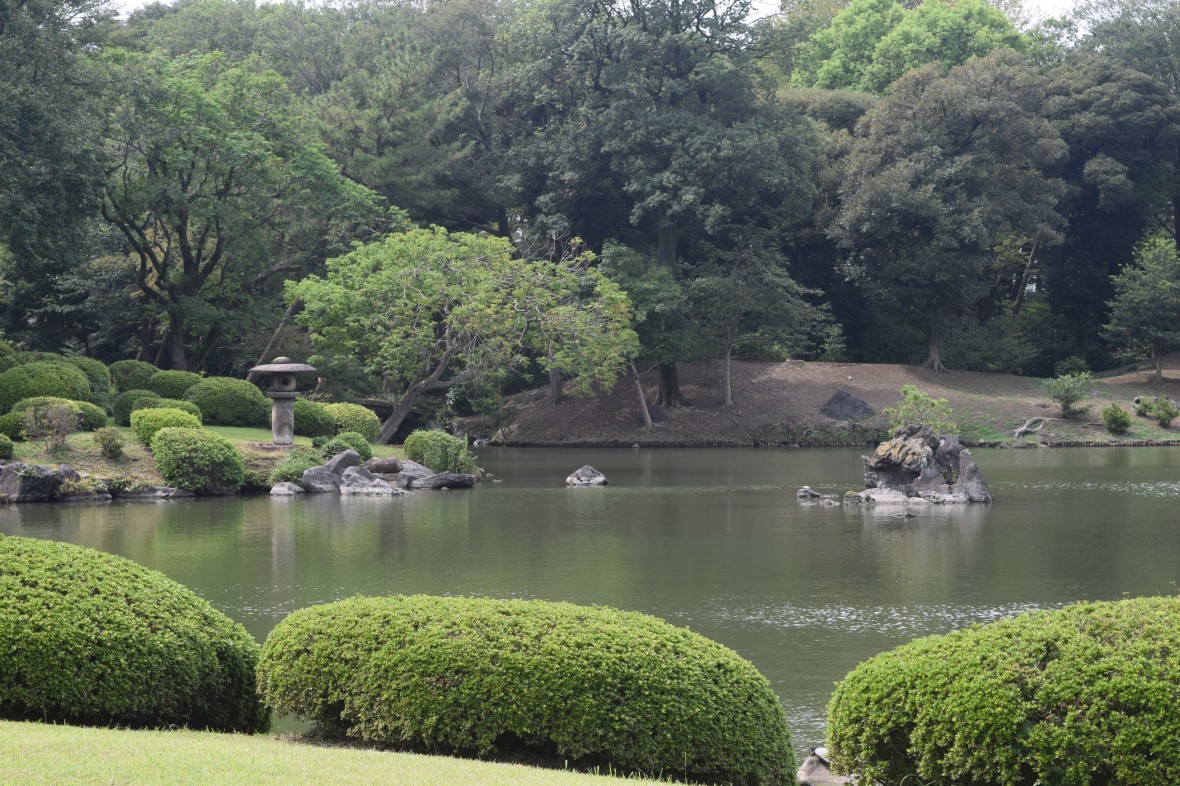
Rikugien covers 21 acres and is organized around a large pond containing a wooded island. The paths lead you through 88 miniaturized vignettes drawn from classical Chinese and Japanese poetry.
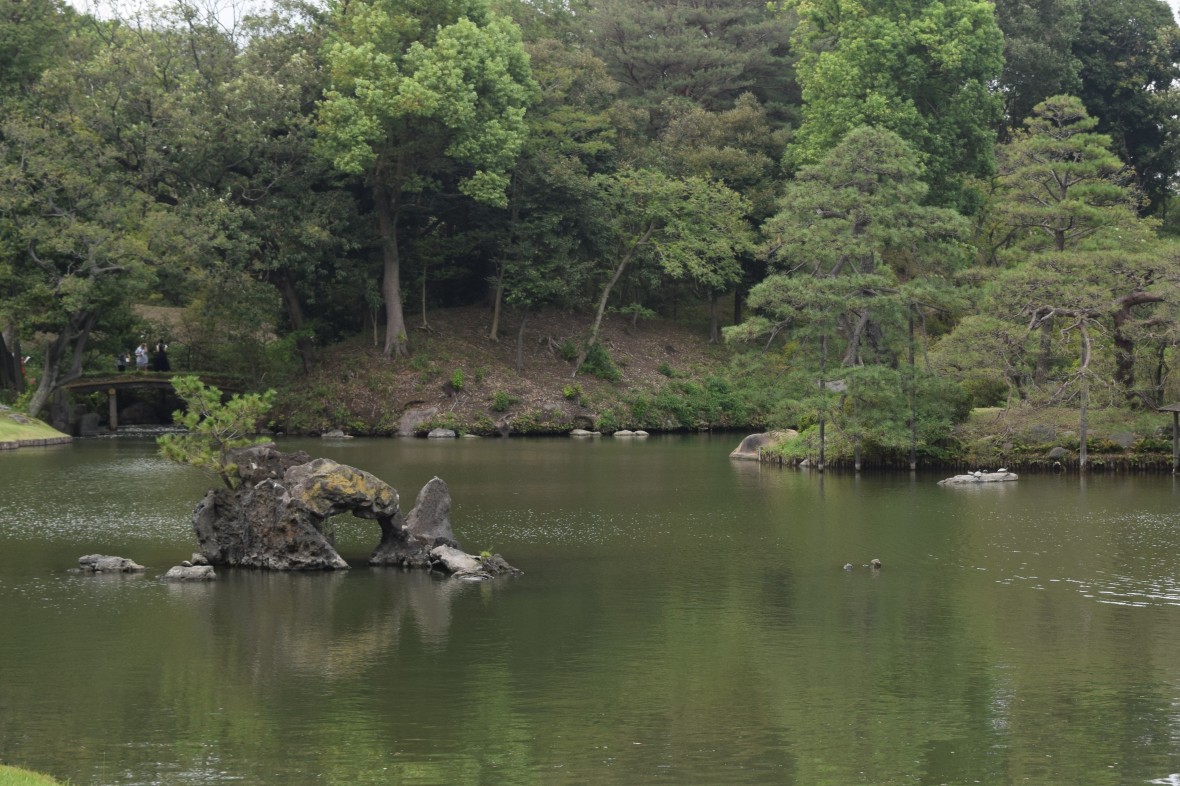
The stone composition on the left represents Horai Island, one of three imaginary islands where the immortals are supposed to live. The arched opening signifies the entrance to a cave.
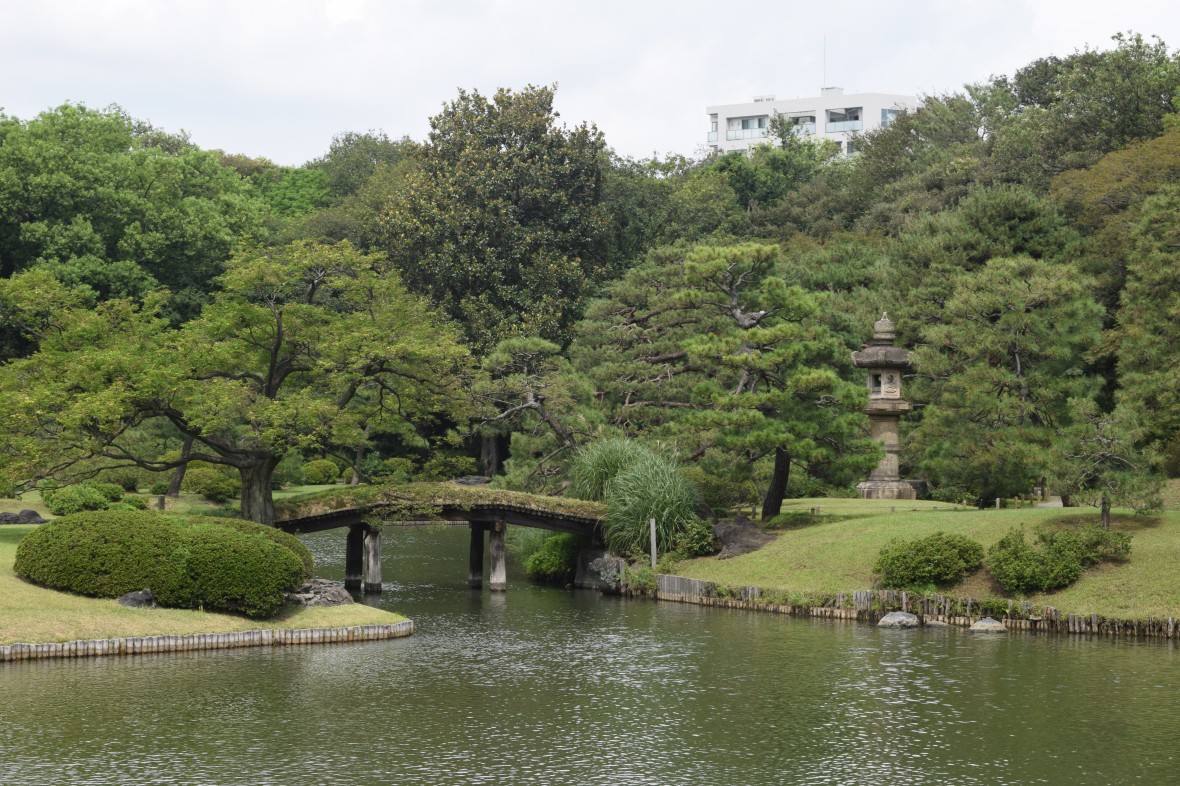
I’m still not sure how I feel about gardens symbolically recreating some other place. On the one hand, it’s impossible to appreciate all the references if you’re not immersed in the culture.
But perhaps it isn’t so different from contemporary naturalistic gardens which, while planned and edited, are meant to represent natural woodlands and prairies. Even so, these Japanese gardens lean much farther towards the controlled end of the continuum of control to spontaneity. And they are created to invoke cultural references, not natural environments.

This is a digression, but I think the way these trees are pruned is quite beautiful. At the same time, they make me think of arthritic fingers.

This arrangement of stones suggesting a rocky shore seems random but is meticulously placed.
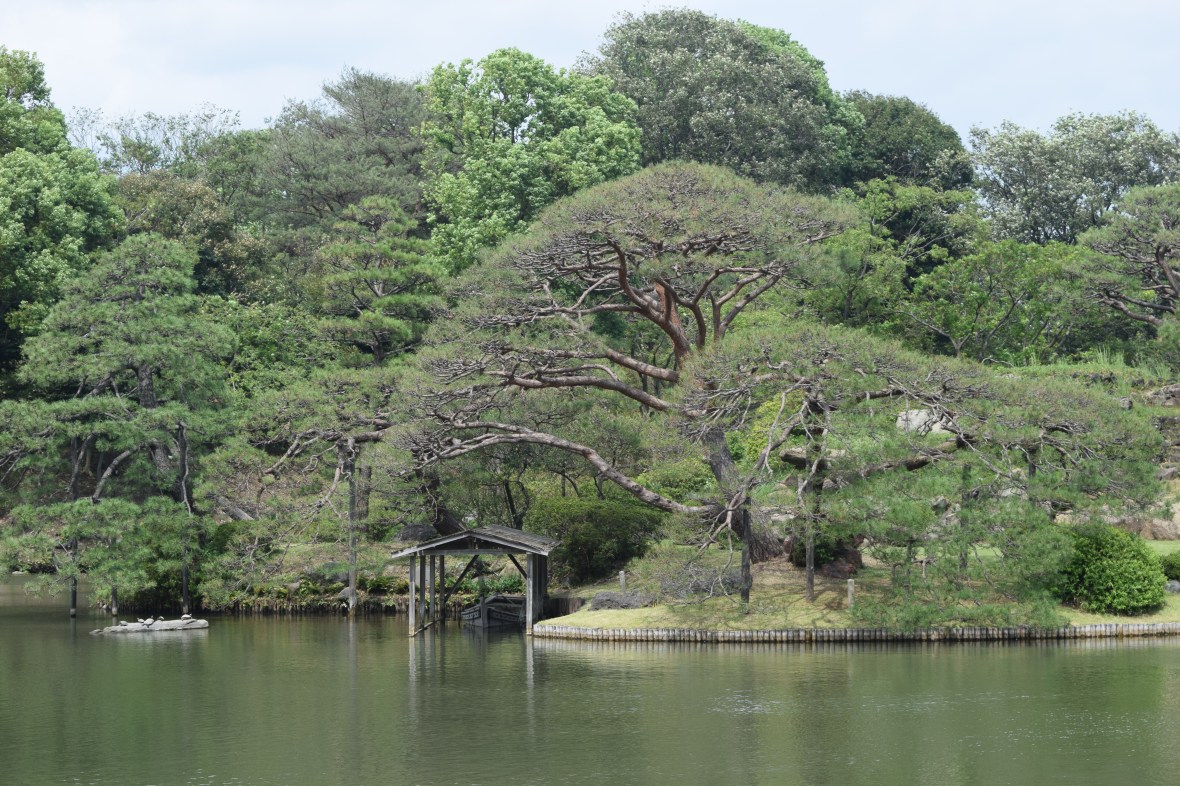
A boathouse with an abandoned, melancholy air.
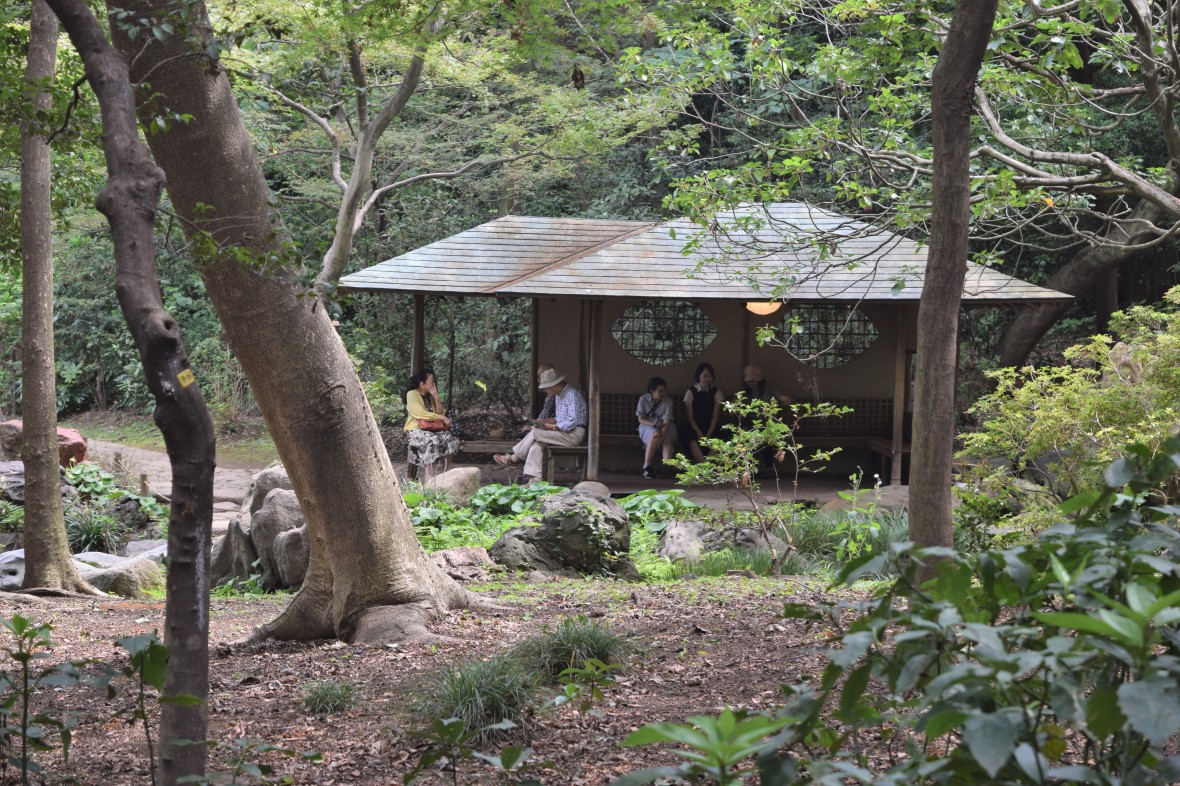
Strollers rest under a pavilion. Did you notice those eye-shaped windows? They make the whole wall look like the face of a man wearing a hat.
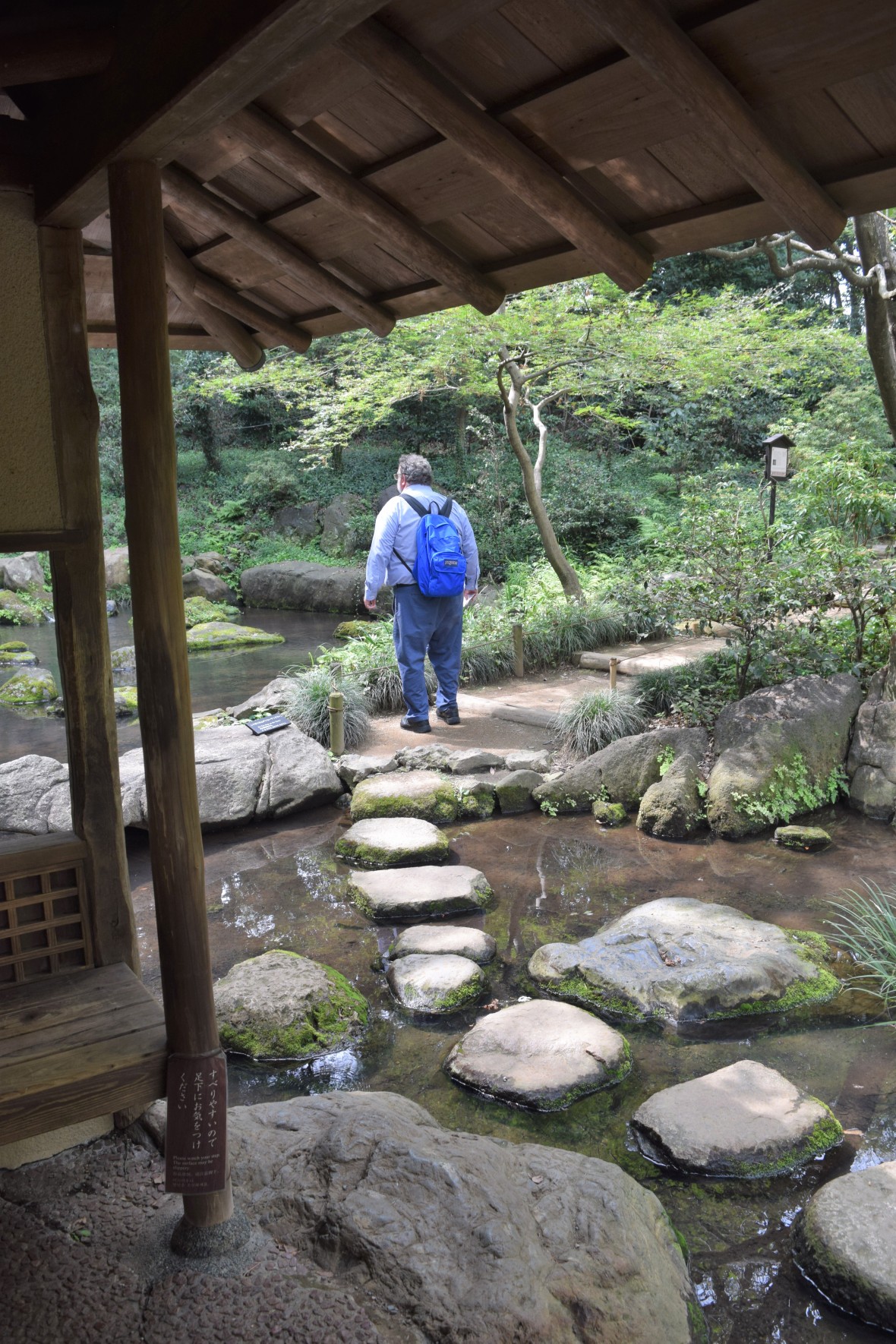
Of all the corners of this garden, the one I am about to enter here is my favorite.
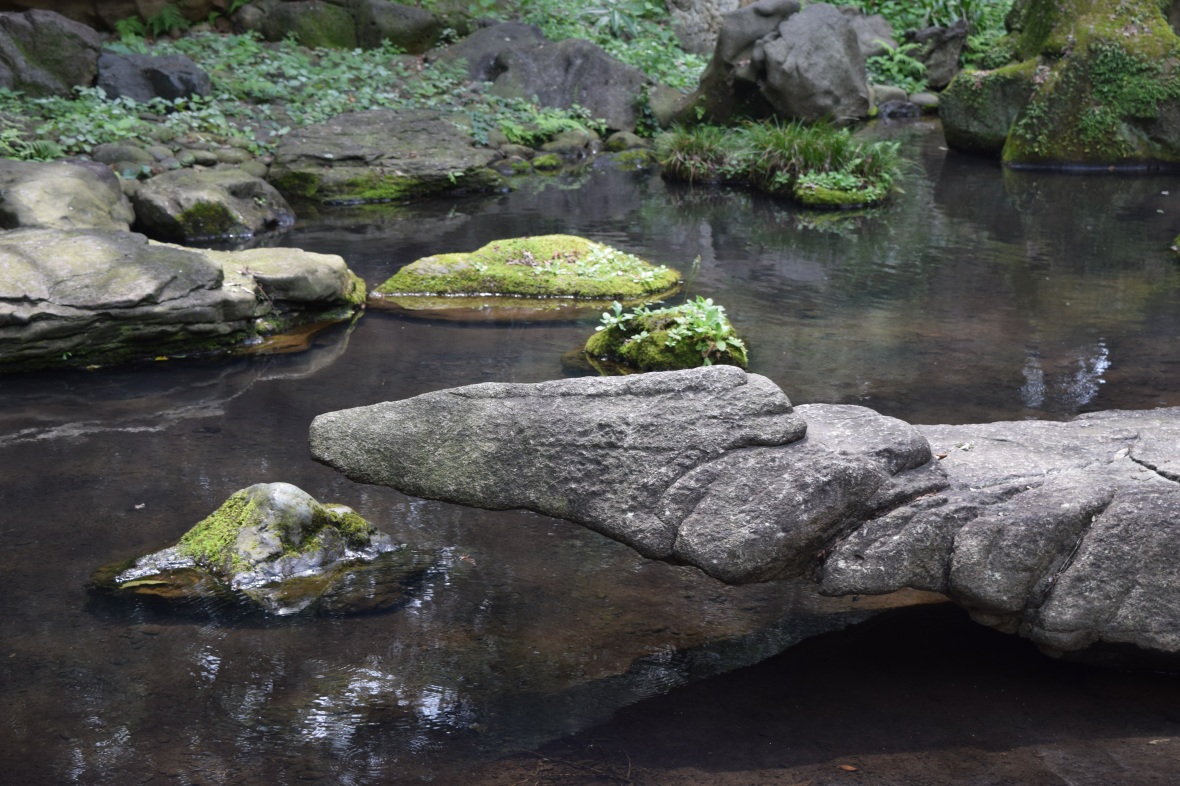
There isn’t a lot of color in Japanese gardens during the summer and early fall. Spring and later in autumn is another story, but we were there in September. What made up for this to a great extent was the almost mesmerizing use of stone and water.

We suspected that the turtles were spying on us.
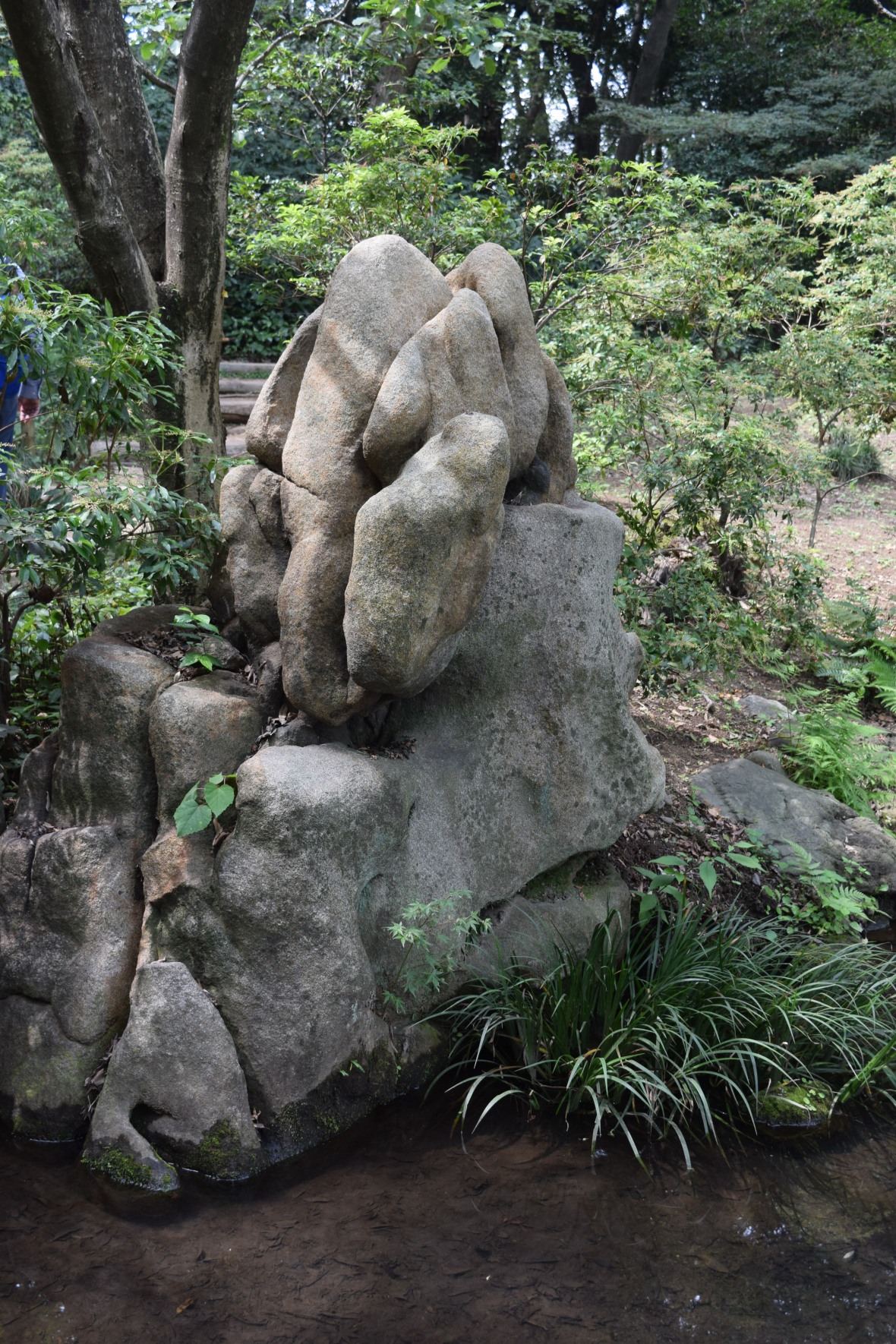
What is it about stone that can be so, well, charismatic?

The Japanese have a word for stones that divide a stream: mizuwake-ishi. This one is pretty great.

A pair of stone slabs make a bridge.

A farewell view of the island.
Lots more to come from our trip to Japan, but that’s all for now.





Very beautiful and captivating ❤️
Thanks.
An enjoyable stroll Jason.
Thanks.
The use of stone is exquisite. Just looking at the photos gives a real sense of calm.
The way they use stone in the garden is definitely an art form.
Perhaps Japanese gardens are a bit like Shakespeare. You don’t have to understand everything to get a feeling from the work. The feeling I get, from the pictures, is calm and order.
That’s a good thought.
Such a peaceful setting – I can see how a stroll thought that garden would do wonders to clear the mind.
Agreed.
The calm and contemplative feeling of Japanese gardens is always a delight.
Well said.
I am so appreciative of your explanations of some of the Japanese meanings of stones etc. To me every garden is a human contrivance whether it is naturalistic or symbolic in other ways. Humans can’t keep themselves from trying to make something that pleases them.
True. There is often a symbolic meaning whether we are aware of it or not.
You are right. They are absolute masters at the use of stone.
It’s a little too formal for my back yard but I’d love to visit it.
I think you’d enjoy it.
I love Japanese gardens, but like you, it’s not the style I would want in my own garden. Your favorite place reminds me of the waterfall at the Anderson Japanese Garden in Rockford–the mossy stones in the water are mesmerizing and my favorite spot in that garden.
Yes, the two are similar.
Japanese gardens are so lovely.
Hello Jason, I can appreciate the sheer beauty, symbolism, design and incredible attention to detail Japanese gardens have, but they’re just not my cup of tea. I can’t get on with them as they feel too manicured, which makes me feel uneasy. It’s just a personal thing as I’m biased by my own style, which is the, “imminently out of control” look.
Yes, I agree they tend to have a manicured look. Even when they are supposed to look natural, it’s a very meticulously controlled naturalness.
It’s really the Japanese gardens are symbolic, Jason. I liked the ‘arthritic fingers’, you have good sense of humor. These pines remind my small pines I prune every year.
I like Pines.
there’s something about Japanese gardens that I’ve always enjoyed and they always are peaceful. Laughing about the arthritic fingers of the tree. Those gnarled trees are so beautiful in all seasons, I wonder why we don’t think that way about our own fingers that way? I’ll think on that as my fingers age.
They are beautiful, even though they make me think of arthritis.
Well, then they’re all that much more perfect for me! =)
I just loved the stones, they almost seem alive. I enjoyed all the different forms they suggested.xxx
The stones are amazing.
The stones are amazing.